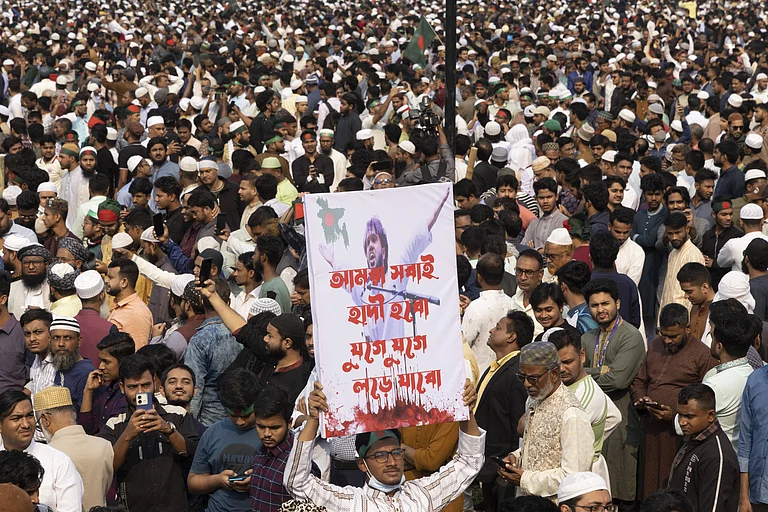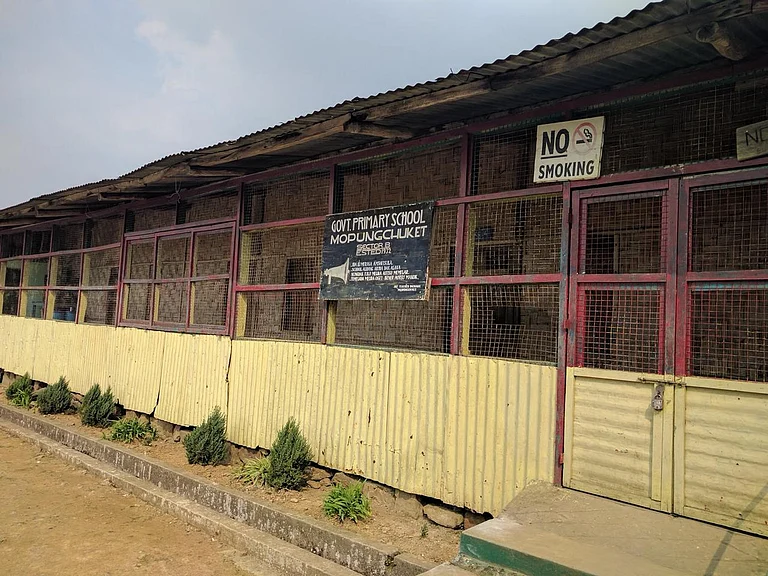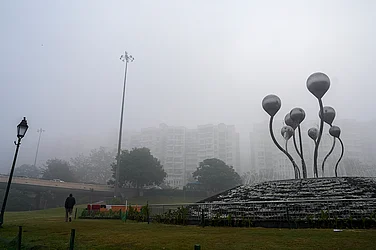India is used to phrases like “cross-border firing” or “border scuffles” as the country lies between two belligerent neighbours — Pakistan to the west and China to the north. In recent years, however, such phrases have been used for domestic inter-state disputes.
In July 2021, five Assam police personnel and a civilian were killed in a clash at the contested Assam-Mizoram border with Mizoram Police personnel and others. In November 2022, six persons from Meghalaya were killed in a clash at the contested Assam-Meghalaya border.
The four Northeastern states of Arunachal Pradesh, Meghalaya, Nagaland, and Mizoram were carved out of Assam at various points. With each having a different perception of their territory, all four states have border disputes with Assam.
The roots of border-disputes in the Northeast
The border disputes in the Northeast are complicated by underlying ethnic tensions and presence of militancy in the region. Militants there utilise ethnic tensions and border disputes to instigate violence, which is one of the reasons why inter-state disputes in the Northeast are more likely to get violent than disputes elsewhere in India, according to Pushpita Das, an expert on the Northeast at the think tank Manohar Parrikar Institute for Defence Studies and Analyses (MP-IDSA).
The unique history of the Northeast and the state-formation there also contribute to the complexity of disputes. Unlike Uttar Pradesh or Bihar, the British never governed the region as an integral part but treated it as a frontier region that they left ungoverned to a large extent. The border disputes are, therefore, also a colonial legacy to a great extent.
“The British viewed the Northeastern frontier as a buffer between India and China. They were not keen on demarcating borders between British India and Burma, as Burma was also part of British India. There was no change even when Burma was separated from India in 1935. They were more focused on the external border because of military or strategic reasons. They no doubt imposed direct colonial administration in the valleys of Northeast which yielded considerable revenue, but they showed little interest in the hill areas which were variously classified as partly excluded, fully excluded, and unadministered areas,” says H Srikanth, Professor, Department of Political Science, North-Eastern Hill University (NEHU).
This meant that, in 1947 upon Independence, India inherited a region that had until then been governed largely as a frontier tract —quite literally, as Arunachal was called North-East Frontier Tract— instead of an integral part. Moreover, several pockets of the region were quite autonomous and were not used to the idea of internal borders.
Srikanth tells Outlook, “The British through different laws created different autonomous districts and allowed considerable autonomy for hill tribes to continue their tribal ways of life.The hill areas of Northeast India were no doubt a part of British India, but the British did not feel the need to integrate them under the colonial administrative rule.”
The territorial evolution of the Northeast
It took decades for Northeast India to take its present shape, just like the rest of India.
In 1950 when the Constitution came into being, Assam was the only full-fledged state in the Northeast. Manipur and Tripura were Union Territories (UTs) at the time. Both were princely states prior to Independence.
This is how the other states in the region came into being over the years:
Nagaland: In 1963, Nagaland was carved out of Assam as a full-fledged state.
Meghalaya: In 1969, Meghalaya was made an autonomous ‘state within a state’ of Assam through Assam Reorganisation (Meghalaya) Act, 1969. Meghalaya was elevated to full statehood in 1972.
Arunachal Pradesh: In 1954, the North-East Frontier Tract (NEFT) was renamed as North-East Frontier Agency (NEFA). It remained a sub-state within Assam until it was renamed as Arunachal Pradesh and converted into a UT in 1972. It became a full-fledged state in 1987.
Mizoram: In 1972, Mizoram was made a UT along with Arunachal. In 1987, it was granted statehood along with Arunachal.
The UTs of Manipur and Tripura were made states in 1972.
Sikkim was integrated into India in 1975 after the people there decided in a referendum to join the Union of India. It was until then a separate country and an Indian protectorate.
What are the border disputes in the Northeast?
The border disputes in the Northeast are associated with Assam as four states were carved out of it over the years. These disputes are rooted in different perceptions of land and a complex colonial history.
“Land is a very emotive issue in the Northeast. Various sides have gradually encroached on more and more territory and this leads to frequent flare-ups of long-running disputes,” says Pushpita Das, a Research Fellow and Coordinator of the Internal Security Centre at think tank MP-IDSA.
Assam-Nagaland dispute
Assam and Nagaland have a 434-km-long border. Nagaland demands 12,488 square kilometres of Assamese territory, according to the issue brief Inter-State Border Disputes In Northeast India, published by MP-IDSA.
The Assam-Nagaland border dispute predates the formation of Nagaland as a state in 1963. The demand was raised in both the Nine Point Agreement (1947) and 16-Point Agreement (1960) that Naga representatives signed.
Prior to Independence, Naga leaders had started discussions on their future after Independence of India. The Naga leaders raised demands to bring all Naga regions in one unit. The Naga question was settled —for the time being— in the Nine Point Agreement signed between the Naga National Council (NNC) and the then-Governor of Assam Sir Akbar Hydari. Point Six addressed the question of boundaries.
“That present administrative divisions should be modified so as (1) to bring back into the Naga Hills District all the forests transferred to the Sibsagar and Nowgong Districts in the past, and (2) to bring under one unified administrative unit as far as possible all Nagas,” said Point Six.
The two districts remain in Assam to this date. The Naga Hills district was granted statehood in 1963. In 1960, the issue was addressed again in the 16-Point Agreement between the Government of India and the Naga People’s Convention. Point 12 sought the “question of the inclusion of the Reserve Forests” in the Naga state and point 13 sought that “other Nagas inhabiting contiguous areas should be enabled to join the new state”.
Over the years, various committees have been formed to address these issues, but no solution has been achieved. Clashes have also occurred on several occasions.
“The refusal of Nagas to accept the notified boundary saw large forested tracts of Assam encroached upon by the Naga rebels in the 1960s, which were used as hideouts…Since then, violent clashes along the Assam-Nagaland border have become a regular feature, with major armed conflicts reported in 1968, 1979, 1985, and the latest in 2014,” notes the MP-IDSA issue brief, authored by Das.
Assam-Mizoram border dispute
The Assam-Mizoram border dispute is rooted in Mizoram’s rejection of the colonial notification on which the inter-state boundary is based.
While the Assam-Mizoram border is based on a 1933 notification, according to North-Eastern Areas (Reorganisation) Act, 1971, the Government of Mizoram has maintained that the border should be based on an 1875 notification.
Mizoram claims a total of 819.15 sq km territory of Assam.
In September 2022, Assam and Mizoram agreed to form regional committees to resolve the inter-state disputes.
Assam-Meghalaya border dispute
Assam and Meghalaya have a total of 2,765.14 sq km disputed territory, according to the issue brief by MP-IDSA. The dispute is rooted in a 1951 boundary affirmed in 1969.
Parts of Jaintia Hills were transferred to the Mikir Hill (Karbi Anglong) district of Assam and areas in Garo Hills to Goalpara district of Assam along with the contiguous areas in Ri Bhoi district to the Kamrup district of Assam, according to the issue brief. Meghalaya maintains that these areas rightfully belong to it.
Assam-Arunachal Pradesh border dispute
Assam and Arunachal share a border of 804.1 km, of which only 396 km was earlier demarcated, according to MP-IDSA’s issue brief.
Arunachal has maintained that the transfer of plains to Assam in 1951 —when Arunachal was known as NEFT inside Assam— was not right as the people of the area were not consulted.
Since last year, however, the two states have resolved most of their inter-state border disputes in two phases. Of 123 villages under contention, the status of 37 was settled last year. Of the remaining 86 villages, the status of 34 was resolved last month.
The remaining disputes would be settled through regional committees, according to the agreement signed between Assam and Arunachal last month.
Why are border disputes in the Northeast so complex?
A number of characteristics unique to the Northeast make the inter-state border disputes there so contentious and vulnerable to flare-ups. These characteristics include aspects as fundamental as the region’s inclusion in the Union of India and its demography.
When the British left, India inherited the Northeast where several communities had never seen direct British rule and, by extension, the rule by New Delhi. It was left to the founders of the republic to integrate them into the country. The challenge was to integrate peoples who had been autonomous for much of modern Indian history.
The many and diverse tribes of the region, which were at times at odds with each other, added to the list of issues. Attached to their land, they were concerned about the influx of ‘outsiders’ and such concerns remain to this day — despite Constitutional safeguards. They also had little in common with the rest of India.
“The tribal areas occupied by the British then formed part of Assam province but were given a separate administrative status. The socio-political structure was not disturbed and a deliberate policy of excluding the outsiders from the plains was followed,” note the authors in the book India Since Independence, adding that this, along with other deliberate actions by the British, meant that the region’s cultural and political contact with the rest of India was “virtually absent”.
The authors note that the British promoted Christian missionaries to settle and proselytise in the Northeast, which in turn collaborated with the British to “keep the nationalist influence out of tribal areas”.
“In fact, immediately after Independence, some of the missionaries and other foreigners even promoted sentiment in favour of separate and independent states in North-eastern India. The virtual absence of any political or cultural contact of the tribals in the Northeast with the rest of India was also a striking difference,” note Bipin Chandra, Mridula Mukherjee, and Aditya Mukherjee in India Since Independence.
Although different territories in Northeast India were under the direct or indirect control of the British, the colonial rule left the people divided, says H Srikanth, Professor, Department of Political Science, North-Eastern Hill University (NEHU). He adds that this left some areas and communities backward and while some came under the influence of the Indian nationalist movement, some remained untouched by India's freedom struggle.
He tells Outlook, “When India became Independent, all these diverse areas and communities administratively and politically became a part of the Indian state, but not enough efforts were made to resolve internal contradictions among the communities and between the states. Ethnic conflicts and sub-regional uprisings made it difficult for the state to resolve inter-state border disputes.”
It is only by creating a conducive social environment for positive dialogue between different stakeholders and by following the policy of give and take that we will be able to resolve the border disputes, says Srikanth.
Das of MP-IDSA says the militancy and separatism in the Northeast —absent elsewhere in the country— is a key factor that makes the inter-state border disputes in the region vulnerable to flare-ups..
She tells Outlook, “The North-eastern border-disputes are the most violent in India because of involvement of insurgents and criminal elements in the region not present elsewhere. The Assam-Nagaland dispute has been the most violent right from the 1960s. There is a direct connection here with the presence of many Naga militant groups, which have used the disputed reserve forests for escaping and hiding.”
Militancy has made the disputes violent and hardening of stance has always been there, says Das.
“The settlement of the Assam-Nagaland border dispute could be a factor in the broader Naga issue in the Northeast and the ongoing Naga Peace Process,” says Das, adding that the matter of Assam-Nagaland border is sub-judice.
While the Naga groups and the Indian state are engaging, there are key differences between the two sides that make progress difficult. The framework agreement signed between the two sides is interpreted by the Nagas as allowing them a separate flag and Constitution, but that is not acceptable to the Narendra Modi government.
“At the end of the day, people have to resolve disputes by giving and taking. This is how you negotiate. In the Northeast, the positions have hardened over the years. In the Assam-Nagaland dispute, Assam is very firm and does not believe in the Naga claim and is not accommodative to it as well,” says Das.
As for the Naga groups negotiating with the Centre on the broader peace process, Das says that the Centre will seek a solution only within the constitutional framework and not outside it. She adds that she does not think there will be any readjustments in states' boundaries in the Northeast because of the Naga peace accord because the Union government has assured the concerned states that their territorial integrity will be maintained.
“There is no question of Nagas getting a separate Constitution, particularly not after 2019,” says Das, referring to the abrogation of Article 370 of the Constitution of India that provided Jammu and Kashmir with a separate flag and Constitution, making it one-of-its-kind special state in the country. Das adds that while the Nagas would surely not get a separate Constitution, a separate state flag might be given but with some conditions.
As for the inability to resolve these issues for over seven decades, Das refers to the two pacts that the Nagas signed before statehood was granted to them.
“The Hydari-Naga Accord (1947) and the 1960 Resolution record the Naga demands to return all the forest land and contiguous areas belonging to Nagas. But when Nagaland was carved out of Assam, the Union government defined the state's boundary as per 1925 notification and not according to the demands of the Naga community,” says Das.
As roots of the conflicts go several decades back —right up the Independence— and questions as fundamental as the relationship with the rest of India are there, the resolution too would need to address issues beyond immediate short-term triggers of flare-ups. Whether that would be in the form of a court order or an out of court settlement is not known, but what’s known is that it would be possible if everyone comes to the table.
As Srikanth of NEHU said, it is only with a conducive social environment for positive dialogue that the outstanding issues in the region can be resolved.


























